15 - 07 - 2021
By BPTW Design Technology Partner, Mark Waite, and Consultant and Former Founding Partner, Mark Bottomley.
Currently in its second parliamentary reading, the Building Safety Bill provides a vision of a digital future for the construction industry with far-reaching benefits in structural and fire safety. But what does this digital transformation mean for building owners at the start of their digital journey? BPTW Partners Mark Waite and Mark Bottomley provide their guidance to building owners facing the greatest changes and improvements in building safety in nearly 40 years.
Read our latest guidance on the development of the Building Safety Act here.
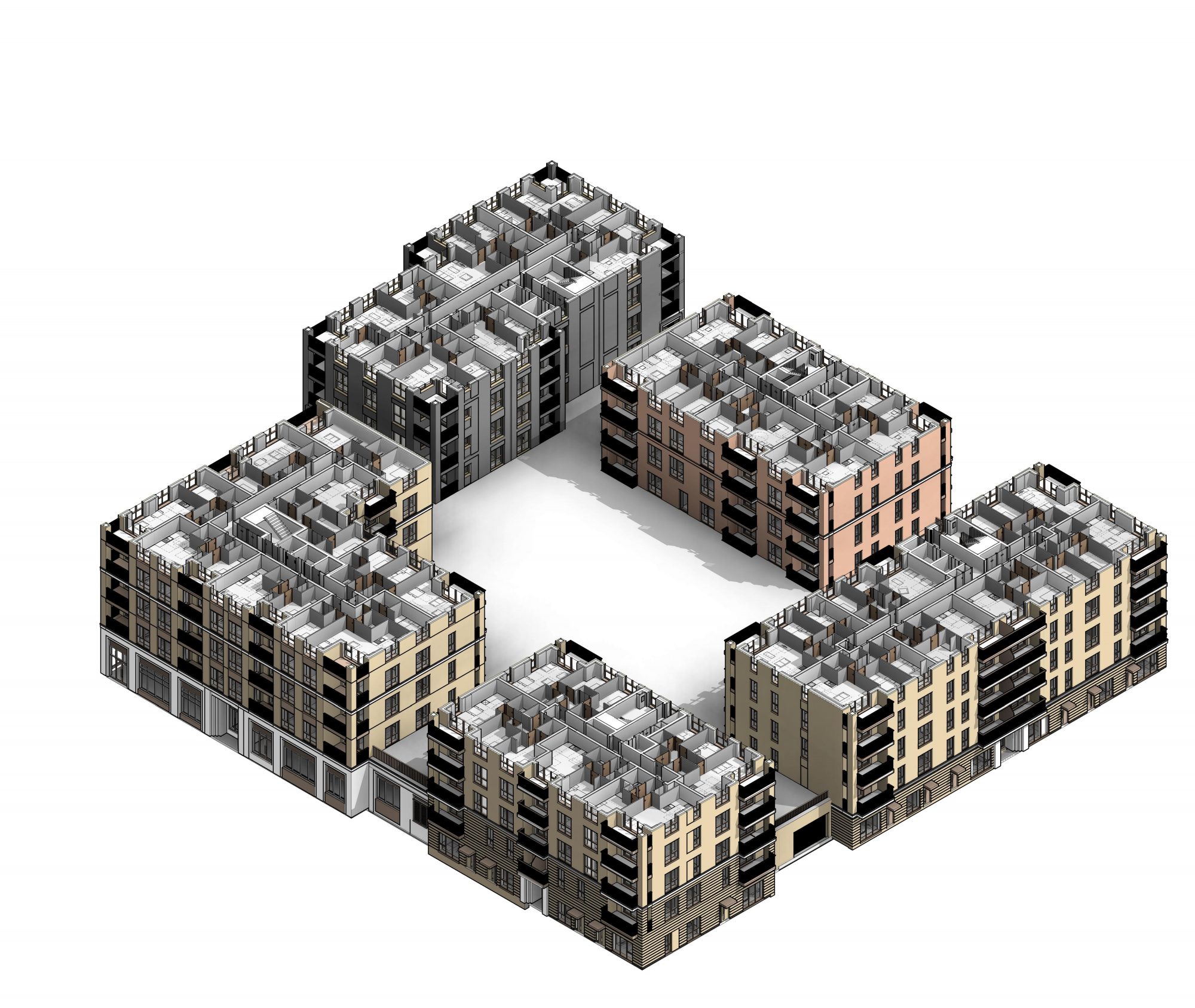
The history of the Building Safety Bill
The Grenfell Tragedy of 2017 exposed serious failings throughout the construction and management of high-rise homes in the UK. In response, Dame Judith Hackitt’s independent review and 2018 Building a Safer Future report recommended the wholesale reform of the procurement, design, delivery, and management of high-rise residential buildings to ensure that residents’ safety was an essential priority throughout a building’s life cycle. The UK Government accepted these recommendations in the development of the Building Safety Bill which is currently in phase one of its passage through Parliament and could become law in 2023.

Key takeaways and challenges of the Building Safety Bill
The Building Safety Bill is a substantial legislation with far reaching implications for the whole construction industry. Defined in the Bill as the ‘right Information in the right format to the right people at the right time’, the Golden Thread of Information is a fundamental requirement of the Bill that must be delivered digitally on all future high-rise residential projects. Whilst the Bill does not define the use of BIM to provide this digital Golden Thread, BIM is a tried and trusted approach that is likely to find favour with the newly created Building Safety Regulator. Further still, these digital records will be retained and updated throughout a building’s lifespan by the building owner with safe building management being the ultimate goal.
As paper-based organisations with limited digital records, many building owners face a daunting task of substantial magnitude to transform their records into the necessary digital formats to meet the Bill and provide a digital Golden Thread. The difficulty of this transformation is hindering building owners from taking their first steps and a plan to address this change in a manageable way is fundamental.
How can building owners use BIM to address these changes?
Ultimately, if building owners are to surpass these challenges two things are needed: an open mindset and the right people for the job.
Building owners need to develop a vision of a digital future. The task requires an honest acknowledgement of where an organisation sits on this trajectory and a clear understanding of the organisation’s definitive digital aspirations. The greatest challenge for any organisation is likely to be identifying the information they do and do not have and establishing a process for collecting the missing data. A step-by-step approach with substantial time for each step to become fully embedded and understood could offer the most suitable way forward.
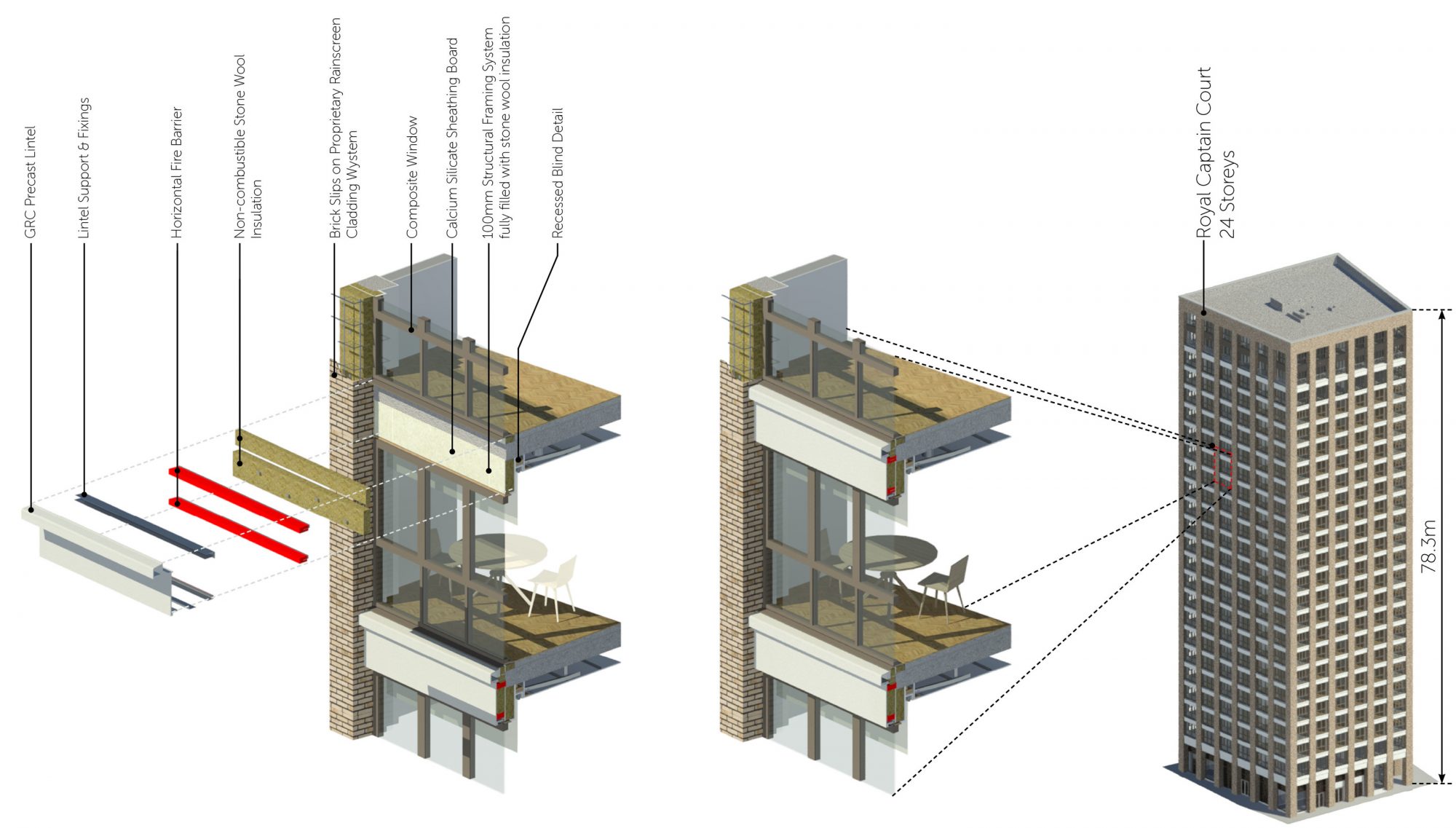
With these new requirements comes a need for new expertise. If a building owner chooses to pursue BIM as a methodology for addressing the legislation, they could be assisted by an Information Manager. Working alongside an Information Manager who is fully conversant with digital technology will assist building owners in interrogating their organisation’s working practices and identifying its information needs. If this expertise is not present within the organisation, then an Information Manager, or BIM Manager, will need to be appointed.
To fully comply with the Bill, building owners should carry out an audit to identify and prioritise the highest risk assets, identify any remedial works, and assess the need for other professionals such as surveyors to capture the relevant safety information. These tasks are likely to be conducted by an appointed professional.
Why BIM?
BIM is information management. At the heart of every BIM project is information – from cost information and construction sequencing to sustainable design. BIM provides a method of collaborating and communicating effectively to manage digital information at every project stage.
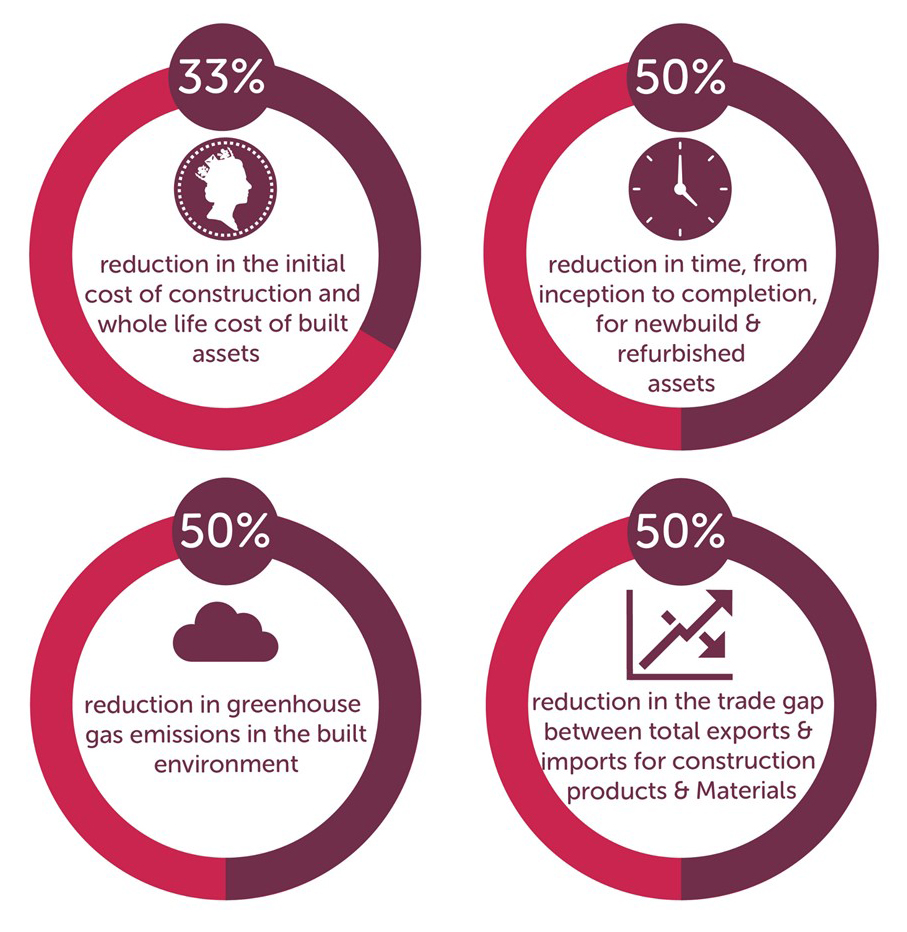
When used correctly BIM can deliver the Golden Thread of Information and will offer building owners the digital processes necessary to manage their new and existing stock safely. Furthermore, reductions in asset management costs, increased site safety, better communications, and even decreases in greenhouse gas emissions are some of the additional benefits achieved by using BIM. It is for this reason that BIM is a primary tool in meeting the Bill and is an important consideration for building owners when planning their digital development.
A road map to a digital future
Armed with their aspirations, the use of BIM, and the right team, building owners can undertake a sequence of key developments in their journey towards digital asset management.
Establishing Exchange and Asset Information Requirements: Building owners need to specify what information they need to manage their asset safely, in what format they require it and at which stage of the project. Collaborating with an Information Manager to determine the Exchange and Asset Information Requirements, or EIRs and AIRs, can help building owners establish their needs. This represents a significant step because BIM is only successful if the EIRs and AIRs are agreed before commencing a project.
Managing data: An up-to-date and digital Building Safety Case must be maintained by building owners to meet the Bill. Few organisations have the digital capacity in their existing IT systems to store this level of information, and decisions as to how best to manage information storage at handover could be hindering progress. Until internal server capacity has been developed, building owners can work with an Information Manger to outsource this information to companies with the knowhow and infrastructure to meet the Bill’s requirements.
Sharing information: Digital information sharing between the project team is critical for the future delivery of high-rise residential buildings and the creation of a Golden Thread. All information needed to manage and maintain assets safely will be included within the Golden Thread. Given the timescale for the Building Safety Bill becoming law and the substantial change programme required by many building owners, appointing an Information Manager as a core member of a building owner’s team could be an important step in project delivery.
Digital records: The Bill requires building owners to take a proportionate approach to delivering digital records and Fire and Life Safety strategy information for their existing stock. This will require a qualified team of surveyors and fire engineers to evaluate the assets, identify the works needed to meet appropriate safety and construction standards, and to deliver digital records for each asset. Speaking with the original design team may be fruitful in acquiring missing digital information about a building that was never asked for before.
Depending on the organisation’s size and number of high-rise residential buildings in its ownership, this digital transformation to meet the Bill’s requirements ranges from a few years to decades because it is connected to existing stock.
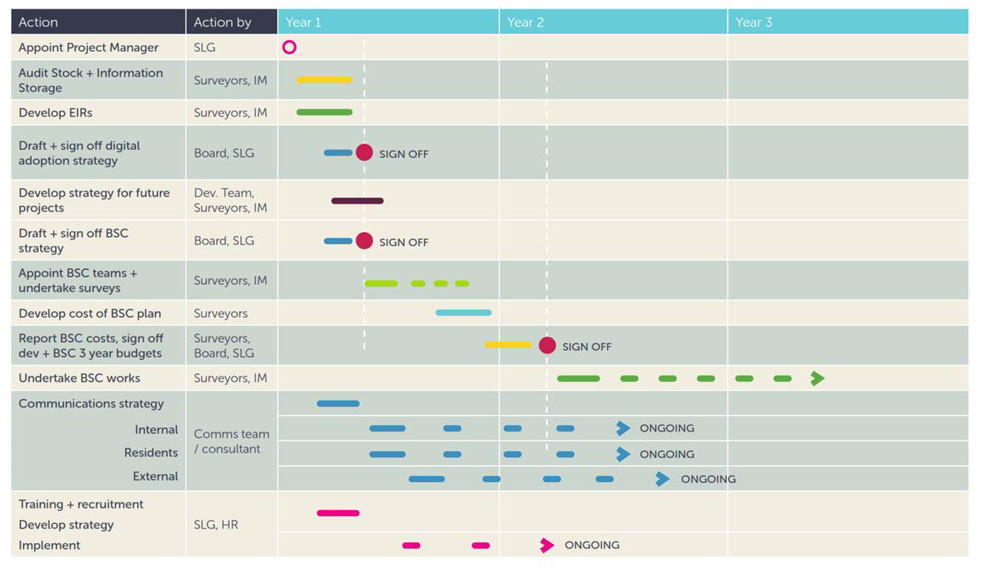
Consequences and conclusions
The Building Safety Bill proposes significant changes to every aspect in the delivery and management of high-rise residential buildings. It requires digital information to be used and developed, and that every organisation involved is committed to digital technology. Clear communication is necessary in this transformation so everyone can understand how they will be affected. Building owners may see their relationships with their stakeholders change as a result of these transformations. To manage this appropriately a detailed Communications Strategy should be included as part of a Digital Transformation Plan. Building owners need to receive and use digital information to manage new and existing stock safely, and they will need to work with Information Managers to develop their own digital information requirements for future and existing projects. Ultimately, the Building Safety Bill seeks to make sure those responsible for the safety of residents are accountable for any mistakes and must put them right.
BIM at BPTW and how we are assisting our clients
For over a decade, BIM has played a key role in our work at BPTW. We recognise the wide-ranging benefits it can bring our clients, as well as the consultants we collaborate with, the public and the construction industry at large. However, we also understand the complexities and challenges faced by many in the implementation of this digital future. That’s why we provide BIM Consultancy, BIM Coordination, and Information Management services across a spectrum of project types in design and construction. Led by Partner Mark Waite, our dedicated BIM team are industry leaders who work with a varied and well-developed client base to provide sound advice on how BIM can transform their organisation and projects for the better. This includes offering our clients guidance on how the Building Safety Bill could impact their organisations and the role that BIM can play in addressing this.
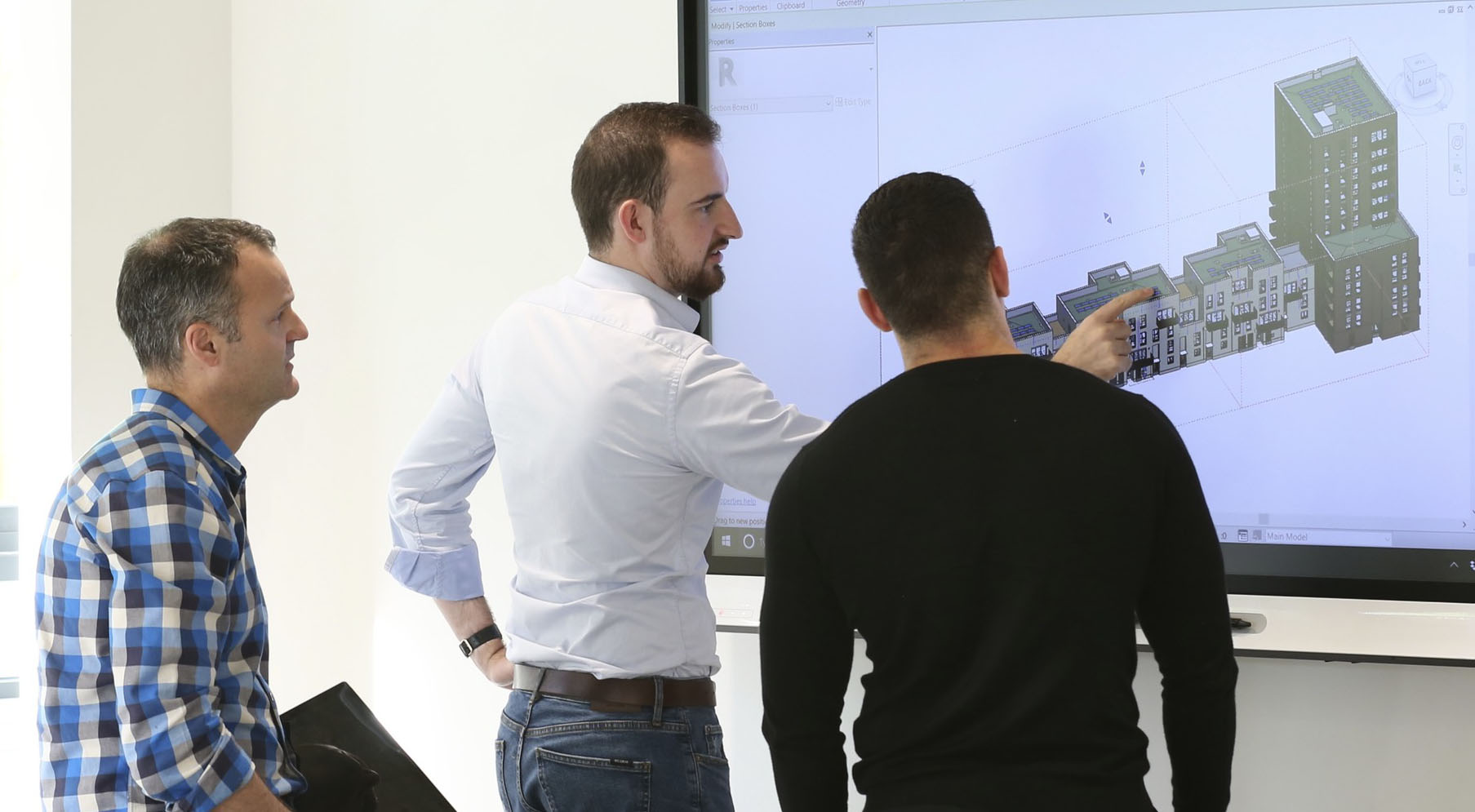
Part of BPTW’s long-term membership with The Housing Forum, Mark Waite and Mark Bottomley presented this guidance to The Housing Forum’s Asset Strategy Forum this May. You can watch their presentation titled ‘The Digital Component in Building Safety’ here. BPTW’s partners have contributed to many talks and events with The Housing Forum to raise the quality of housing in England and you can read more about them on our Insights page.
Profiles: Mark Waite and Mark Bottomley
As Digital Technology Partner, Mark Waite works alongside many of our clients including Catalyst and RHP, as well as relevant industry bodies to further the use of BIM in the residential sector. He is an active participant in the BIM4HAs group which was formed to assist housing associations with BIM implementation. Mark is also leading BPTW’s contribution to L&Q’s and the Ministry of Housing, Communities and Local Government’s Golden Thread Initiative. This recently established programme aims to pilot ways of producing a standardised digital Golden Thread of building safety information for high-rise residential buildings.
Mark Bottomley is one of BPTW’s founding partners and has promoted the use of BIM at BPTW and in the wider residential industry for over a decade. Mark has been an ARB board member since 2019 where the implications of the Building Safety Bill have been widely discussed. In 2015, Mark became a consultant working at a strategic level and he now plays a key role in the practice’s business development and BIM activities.
Insight by



